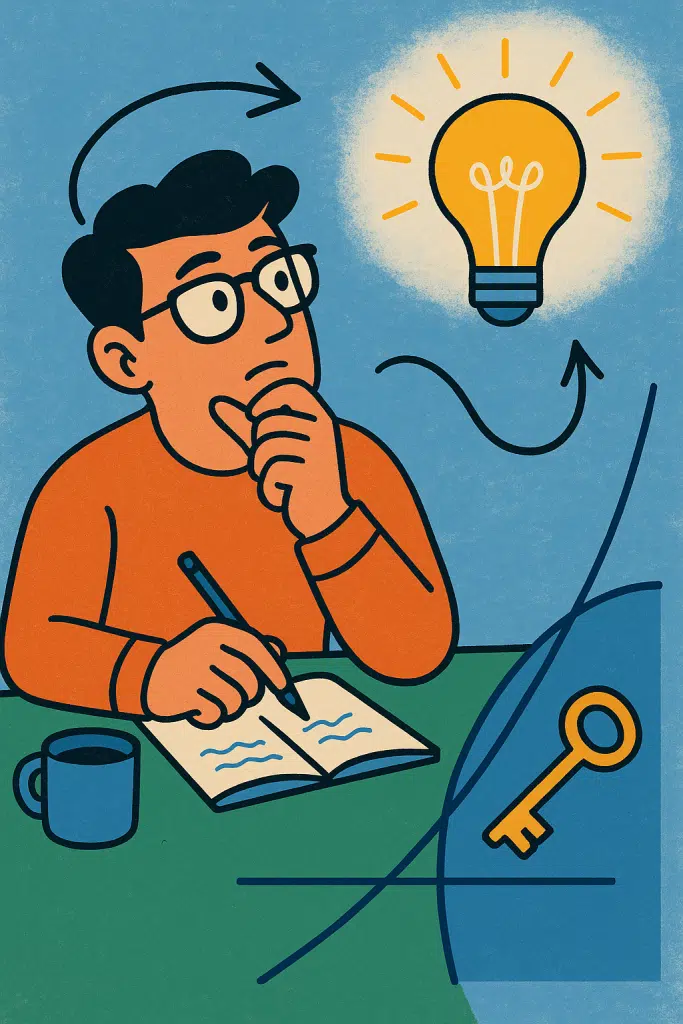Do Tangents Hold the Key to Innovation?
Charlotte Stone July 29, 2025
Curious how wandering thoughts or cross‑disciplinary detours spark breakthroughs? This article explores whether tangents hold the key to innovation—and how detouring from the main path can unlock radical creativity. In our productivity-obsessed culture, we’re told to stay focused and eliminate distractions. Yet history’s most groundbreaking discoveries often emerged from moments when brilliant minds allowed themselves to wander. When Alexander Fleming noticed mold contaminating his bacterial cultures, he could have discarded the “failed” experiment. Instead, exploring this tangent led to penicillin revolutionizing medicine.

This pattern repeats across disciplines. The physicist contemplating unrelated phenomena, the artist drawing inspiration from different mediums, the entrepreneur studying nature’s designs—all demonstrate the power of intellectual wandering. These explorations reveal connections invisible to those who stay strictly within their lanes, forcing us to abandon familiar frameworks and encounter fresh perspectives that linear thinking might never uncover.
Why Tangential Thinking Matters
Innovation often emerges not from following a straight line but by exploring offshoots—the tangents. These lateral paths can expose fresh insights:
- Cognitive incubation: Brief distractions, like moderate ambient noise or a walk, free unconscious associative thinking, boosting creative output.
- Cross‑domain blending: Combinatorial creativity—blending ideas from disparate fields—thrives when minds wander across tangents.
- AI‑enhanced ideation: AI systems expose users to surprising, domain-crossing suggestions. Even if individual ideas aren’t better, collective diversity rises, providing new tangents to explore.
So yes: tangents hold the key to innovation by unlocking creativity through divergence, incidental associations, and idea blending.
Emerging Trends Where Tangents Drive Innovation
Tangents in AI‑Augmented Creativity
Recent research shows that top scientists using AI tools discover 44 % more materials and file 39 % more patents, with AI handling idea‑gen tasks while human experts vet the promising paths. AI essentially opens new tangents—novel combinations of insight—while humans evaluate them.
This extended creative relationship, described as Support, Synergy, and Symbiosis, positions AI to augment and expand human tangential thinking—not replace it.
Distributed Creativity—Teams Crossing Boundaries
In fields like design, multimedia, and innovation labs, breakthroughs come when diverse contributors touch on one another’s tangents. Distributed creativity—the interplay of people, tools, environments—lets ideas flow across nodes, unfolding along unexpected paths.
Teams with high epistemic motivation, tolerance for ambiguity, and open mindsets generate more tangential ideas and richer innovation outcomes.
Real‑World Tangents: Nature, Movement, and Ambient Factors
Simple tangents like walking, nature immersion, or even moderate noise shift mental schemas:
- A Stanford study found walking outdoors can raise divergent thinking by up to 60 %.
- Other research finds moderate ambient noise (~70 dB) promotes abstraction and idea mixing—hallmarks of tangential creativity.
These practical tangents are rising in trend within workplace wellness and productivity design.
How to Cultivate Tangents for Innovation
Here’s a practical guide to apply tangent‑based innovation in teams or solo:
1. Design for Incubation
- Introduce subtle distractions—background music, short walks, micro‑breaks—to allow ideas to percolate.
- Encourage team members to spend unstructured time away from core tasks.
2. Embrace Cross‑Domain Exposure
- Host “tangent labs”: sessions where people share insights outside their own field.
- Use AI tools to surface unusual idea combinations.
3. Build Diverse Teams
- Recruit people from varied educational, cultural, and disciplinary backgrounds.
- Create psychological safety so tangential, even odd ideas can be shared.
4. Leverage AI as Tangent Generator
- Pair human domain experts with AI suggestion systems.
- Use AI to expand ideation breadth, then apply expert selection.
5. Follow Tangents to Implementation
- Track promising side-paths using simple logs or “tangent cards.”
- Periodically review detours and identify those worth pursuing.
Case Studies in Tangent‑Driven Breakthroughs
A. Materials Innovation via AI (Lab Context)
At a major R&D firm, scientists using AI‑based suggestion tools discovered many previously unexplored compounds. High performers used domain knowledge to filter AI‑generated tangents—leading to more radical innovation and a 39 % increase in patent filings.
B. Workplace Wellness at Tech Firms
Some companies have redesigned offices: ambient sound zones, walking‑meeting trails, and micro‑outdoor settings. Employees report higher idea diversity and fresh perspectives directly tied to these tangential shifts.
C. Cross‑Disciplinary Design at Creative Labs
Organizations combining technologists, designers, and speculative thinkers—like those in Stanford’s Human‑Centered AI Lab and interdisciplinary labs—are generating innovations that challenge conventions. These labs encourage tangents through speculative design and creative crossovers between art and engineering.
Challenges & Risks
| Risk | Commentary |
|---|---|
| Too many tangents | Without structure, creative efforts can fragment—ensure mechanisms to select viable threads. |
| Groupthink resistance | Teams under time pressure may resist ambiguity; high epistemic motivation is required. |
| AI overload | AI may suggest many irrelevant tangents; expert curation is key to avoid wasted effort. |
Why Tangents Work: The Neuroscience & Psychology
- Unconscious incubation: Allowing brains to wander contacts deeper associative networks.
- Absorbing novelty: Exposure to cross‑domain cues widens conceptual linkage pathways.
- Transformational leadership that fosters open exploration supports better tangential creativity in teams.
In short, tangents engage mental systems that favor novel, useful, and surprising combinations—core traits of innovation.
Conclusion: Tangents as Innovation Superpower
If you’re wondering whether tangents hold the key to innovation, the answer is increasingly “yes.” From individual labs augmented by AI to teams designing across disciplines, those who leverage purposeful detours—walking breaks, cross‑field exposure, AI‑driven brainstorming—are pulling ahead.
The pattern repeats across history: Darwin’s daily walks, the Wright brothers’ bicycle insights, Google’s 20% time. Tangents bypass cognitive blind spots that trap linear thinking, forcing minds into unfamiliar territory where breakthrough connections emerge.
Modern AI amplifies this by surfacing cross-domain insights humans might never encounter alone. The key is designing systems that reliably generate productive tangents rather than random wandering.
By designing for tangents—via environment, teams, tools, and mindset—you build the conditions for breakthrough thinking that linear paths rarely uncover..
References
1. Fink, T. M. A., Reeves, M., Palma, R., & Farr, R. S. (2016). Serendipity and strategy in rapid innovation. trig.com
2. He, Y., Lee, J.-D., & Lee, S. (2024). Innovation beyond intention: Harnessing exaptation for technological breakthroughs. arXiv, December 27, 2024. arXiv
3. Gabora, L., & Carbert, N. (2015). A Study and Preliminary Model of Cross‑Domain Influences on Creativity. arXiv, August 1, 2015. arXiv







